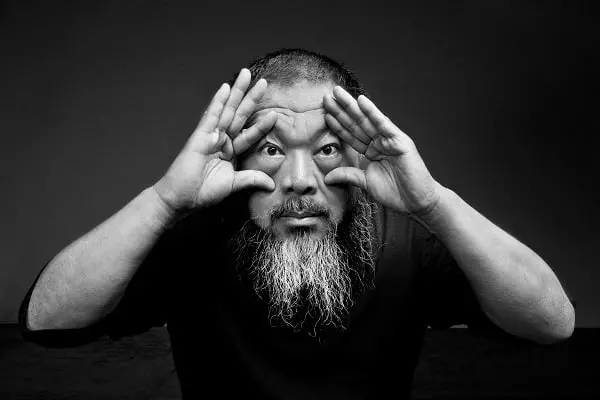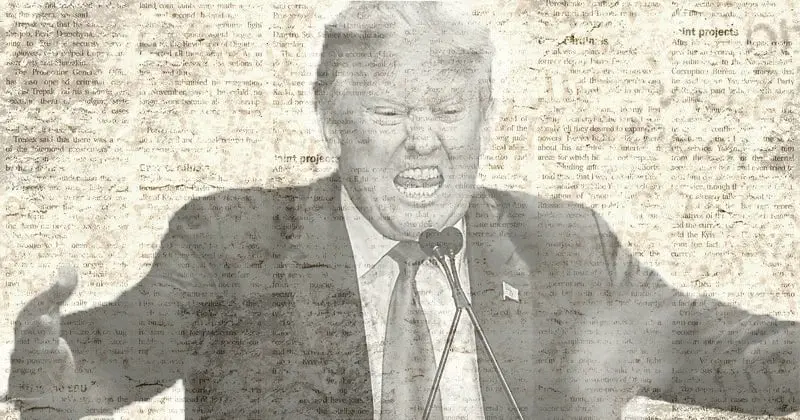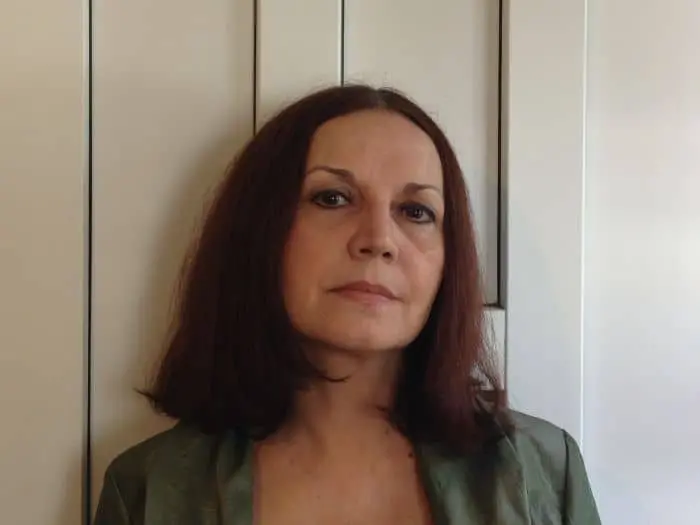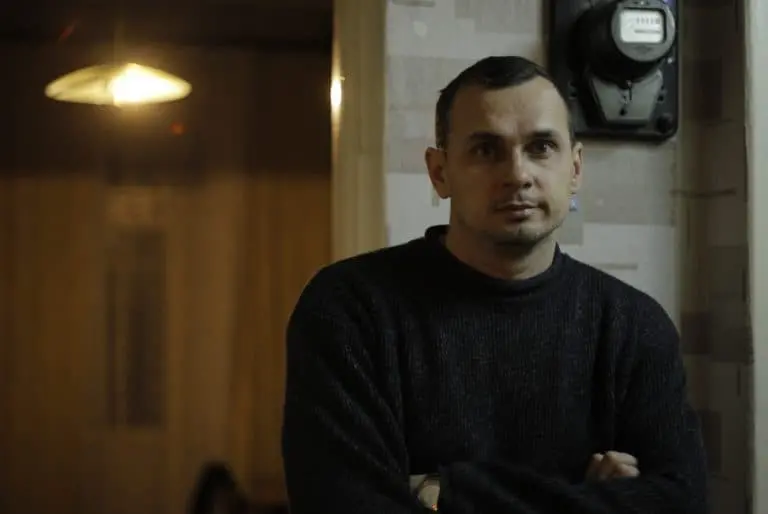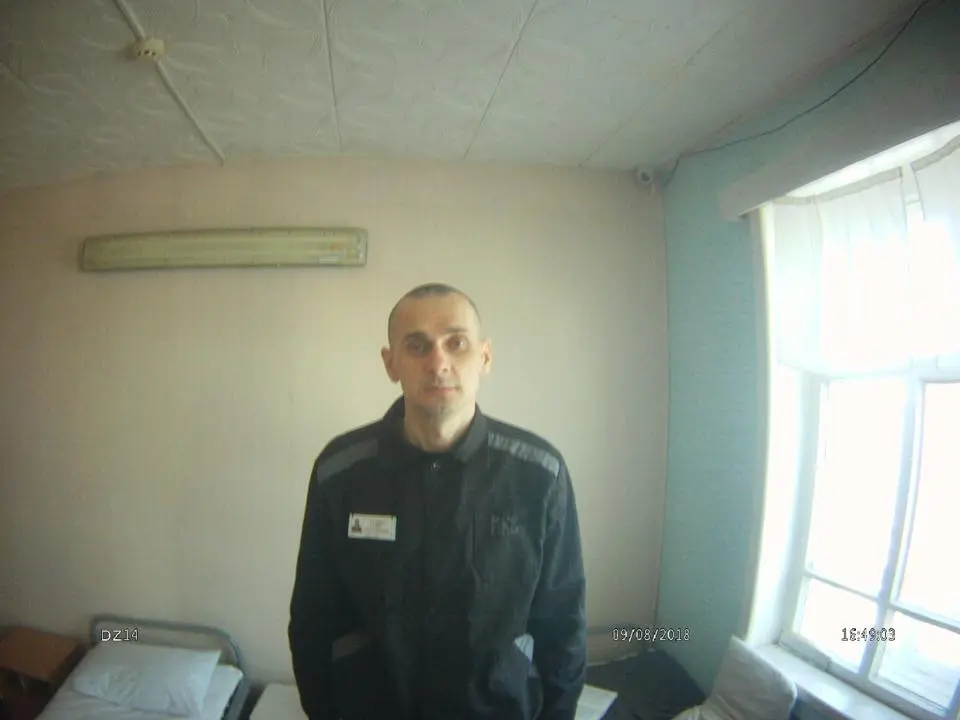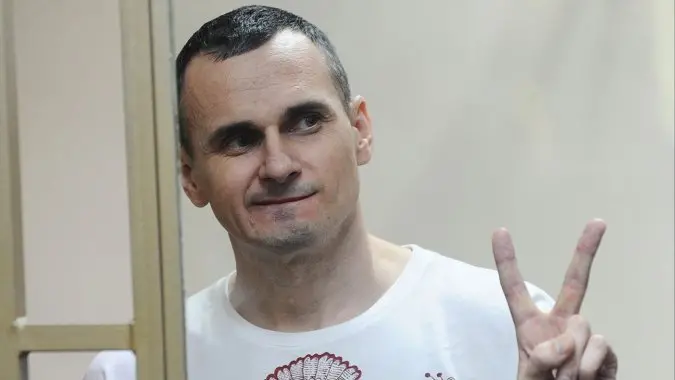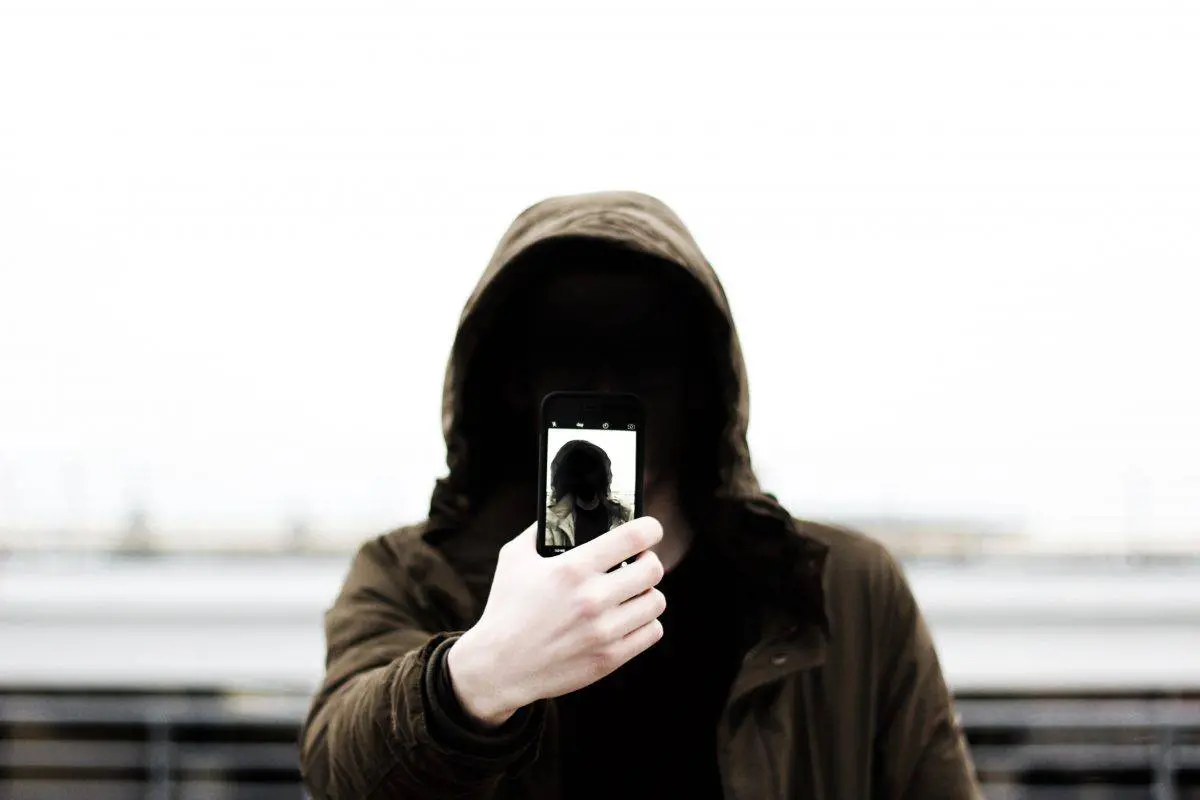In the wake of #MeToo, how should we consider the art of those accused of reprehensible acts? Should their actions affect how we see their work? Should it color our reasons for engaging with it? As part of PEN America’s Conversations of Consequence event series, Deborah Solomon, A. O. Scott, Tanya Selvaratnam, and Maggie Mustard discussed the issues surrounding power, spectatorship, violence, gender, labor, and media consumption. The Art of the Accused was an official Brooklyn Book Festival Bookends event, organized by PEN America and its Artists at Risk Connection program and Times Literary Supplement (TLS), co-sponsored by the Andy Warhol Foundation for the Visual Arts. The conversation has been slightly condensed and edited for clarity.
 PEN America—Photo by Aslan Chalom
PEN America—Photo by Aslan Chalom
DEBORAH SOLOMON: The topic today is the art of the accused. When we say “accused” these days, we are often referring to artists who have been accused of sexual misconduct, and it’s a category that seems to be growing larger by the minute, unfortunately. Just this morning, I was reading The Guardian, and I saw that the latest writer to be accused of sexual malfeasance is the long-dead John Steinbeck—a manuscript has been found by his second wife in which she accuses him of being a terrible sadist.
The question that I want to ask is once we know that an artist is not a perfect human being and in fact, maybe guilty of truly reprehensible acts, does it affect reading of the work? How would you approach Grapes of Wrath and East of Eden and other of Steinbeck’s masterworks once you learn that he was morally unsavory? What do we do with Picasso, and Gauguin? You can name any number of artists whose behavior by today’s standards leaves much to be desired. Do we hold that against the work, or is art somehow separate and in a realm removed from morality and good and evil—what did Oscar Wilde say, “There is no such thing as a moral or an immoral book. Books are well written, or badly written”? Do you feel that you can safely separate art from the morally tainted maker?
MAGGIE MUSTARD: No.
SOLOMON: No?
MUSTARD: I’m coming at it from a very specific point of view in thinking about the way that art institutions are telling the narratives, because a museum is not just an institution for appreciation, it’s also an edifying institution; it’s a space of education and communication and community. You brought up Picasso, which I think is a great example. Just because the narrative about him has changed over the last half-century doesn’t mean that the Met has to deaccession every Picasso it owns. I don’t think institutions know what to do, but I do think there’s a way to reframe and allow people to engage with those components of the conversation.
SOLOMON: I think you’re drawing a distinction between living artists and dead artists.
MUSTARD: Absolutely. If a living artist is accused of sexual misconduct should there be a penalty. A. O., you’ve written a famous piece about Woody Allen. As famous as an essay can be, anyway, in the age of soundbites.
A. O. SCOTT: The essay that you’re referring to is about Woody Allen and what I felt I could do, or should do, as someone who had admired and in many ways been formed and influenced by his work with my understanding of his character. My feeling has always been that that’s a personal, individual decision, and it’s hard to make a problematic statement because everybody has comfort zones, the things that they care about and don’t care about.
But I’ve come in the last year to feel the inadequacy or even the cowardice of that position, and to feel like there is something more that needs to be done. Or there is an imperative to reexamine some of our assumptions as critics and people who look at art about the supposed boundary between art and life, and all I can say now is it’s a very complicated undertaking, and we should be cautious about jumping too quickly to conclusions, either rejecting the work of these men—and it’s almost entirely men—or letting them off the hook, continuing as if nothing had changed.
TANYA SELVARATNAM: I think even Shakespeare is problematic through the lens of today, but we have to be open to subjective opinions about it. I might feel very strongly that the art and the artist cannot be separated, but I feel like we have to be open to others around us who might not make that connection, and I think we have to look at the context in which it was created, what were the norms of the day, what was accepted then. We can think differently about the artist, when things about Steinbeck are revealed, but that doesn’t necessarily mean that we have to do away with all of those books knowing the context in which it was created.
I come from the perspective that there’s no work of art so great that it’s not indispensable, and for me personally, I would like to see the works replaced by those whose voices were suppressed, so when it comes to artists I’d like to see more art elevated by Eva Hesse or Ana Mendieta—where can we find space for those voices who were silenced during those times?
SOLOMON: I don’t like when people start attacking works of art as morally debased, I think that’s really problematic, and I feel like artists can go wherever they want in their art. That’s what art is about—it’s about using imagination to say something that hasn’t been said before, and I don’t think we really can judge works of art in moral terms. For instance, when there was a protest this year to remove a Balthus painting from the Met, I was against that. I thought, you can do whatever you want in your art; it’s in your life that your behavior becomes problematic.
So I don’t like seeing paintings removed from museums, but if we’re dealing with the artists themselves, and what kind of punishment or penalty is appropriate, then it really gets complicated. For instance, Chuck Close. Chuck Close has been accused of sexual misconduct, and the National Gallery of Washington canceled a show of his. What do you think of that?
MUSTARD: Two things to say about that: Comparing what happened with the Balthus controversy and what the NGA has done with the Chuck Close raises two interesting versions of institutional responses, which I think in some ways are two extremes. I believe the Met’s institutional response was, “If you have a problem with work, maybe you are the one with the problem,” as opposed to thinking about why the community might be reframing or reconsidering someone who has been very controversial for a long time. That side is basically saying, “We are not going to address this, la la la I don’t hear you,” and on the other side you have the NGA saying, “Okay, this is ongoing situation, we don’t really have all of the facts, we’re going to play it on the safe side and pull the show”—which I think a lot of people who feel certain ways about this have compared to a form of censorship.
I think that there is instead—at the risk of coming across a bit pussyfooted—a middle ground where an institution can say, “Okay, we’re not going to necessarily censor anything, we’re not going to deaccession a work, we’re not going to pull a work, but instead we’re going to make this conversation that’s happening around the accused artist a part of the conversation for you as a visitor, as a member of public, as a member of the community that the museum serves; we are going to give you all of the information we have.”
Institutional transparency might mean that you have to change 5 or 10 times the texts during course of exhibition, and might mean that the educators and docents and the teaching fellows that you have are being trained to engage sensitively with these topics and engage the community with it, but that’s a responsibility that I think an institution has. I think it’s messy, but it’s worth doing.
SOLOMON: Tanya, would you have canceled the Chuck Close show?
SELVARATNAM: I’m not absolutist about these things. What do we do looking back? What do we do right now? And how do we approach moving forward? Those are three very different phases I feel. Right now we are in a context in which that type of behavior is not okay. However, this behavior has gone on for a very long time because of conditioning, because we have woefully inadequate laws, and I think the behavior happens because people know that the law will let them get away with it, and the institutions will enable them. Behind every perpetrator there’s often an enabler and sadly often, that enabler is a woman. We could have a whole conversation about that. We are seeing a lot of people trying to make comebacks who have been outed. Whether it be Louis C.K. or John Hockenberry.
I think you are dealing with people who are bifurcated—most people are in some ways, but these are bifurcated to the extreme, whether they’re extremely charming, charismatic, compelling, brilliant, but they also are hideous in their private lives with so many people. Their currency is their audience, and that currency gives them impunity. By giving them a platform, you continue the impunity, and I think that we have to take some collective responsibility for that, and also think about how the victims feel, think about the subtle and overt triggering that continues every time they see that person continue to have a platform if people don’t hold them accountable, because the laws often won’t.
SOLOMON: It’s interesting that so many people think Louis C.K. is coming back too soon or that Charlie Rose is trying to get on the air too soon. Because these cases were decided in the court of public opinion, there’s no verdict, there’s no sentence—we can’t say they have to stay away for two years. Basically they can come back when the public lets them back. We express our opinion as consumers: Will we support their art, will we buy their albums or tickets to their movies? But I was wondering, since that does seem to be the issue of the moment, when can someone come back? We don’t want to give anybody a life sentence for their behavior, that’s not fair, this is America, the land of second chances, everyone deserves another chance—but when? And how can they express their remorse?
For instance, the piece by Jian Ghomeshi in the New York Review that just came out—it’s very controversial and outrageous. I was appalled by it, I actually tried to cancel my subscription to the New York Review after reading it, but it was so complicated that I just ended up hitting the do-not-automatically-renew button—it’s a really horrible piece! Instead of acknowledging the issues, this person, who is a Canadian broadcaster who lost his job because of very severe accusations, writes this piece that’s one big pity party. He just talks about how hard it’s been, his mother is upset, all that stuff with no acknowledgements, and I was thinking, how can someone accused of misbehavior actually show remorse? What is a good response?
SCOTT: I think there’s maybe one: Dan Harmon, the creator of Community and other TV shows, is a singular example of an adequate and accepted apology. He described what he had done specifically to the people to whom he had done and waited for them to respond. What you notice in the Hockenberry piece, in the Ghomeshi piece, in whatever Louis C.K. is doing, is in fact an absence of remorse and failure of empathy, a failure to understand and acknowledge what it is they’ve done—not only their own sense of victimization but also their own continued entitlement to attention.
The bottom line of this is really power, and is the way men who are seen as successful and powerful feel themselves to be—and are told that they are—entitled to sex, to attention, to more power, and so on. In a way, the success and the power they have that enable this also serve as alibi. Virginia Heffernan had an excellent column in the LA Times where she unpeeled that alibi. You could say if you’re a man in this world, the power that you have makes you potentially predatory and gives you a license to do what you want. Whether you’re the head of a network, whether you’re a great artist, whether you’re a filmmaker, whether you’re the manager of a Dunkin’ Donuts, you have that. And the radical potential of the #MeToo movement is maybe to unwind that a little bit, and get people thinking and talking about it.
SOLOMON: Totally. What we had before was a situation where sexual harassment really had no consequences or penalties. I’ve complained about situations—I went to Bill Keller, the editor-in-chief of the New York Times, when I was a columnist there and complained about someone who I thought should be fired, who was hitting on women in the newsroom, and generally abusive, and when I recounted all his sins in a meeting, Bill Keller said to me, “Deborah, we all have a history,” and that was the attitude then. There were no consequences, men thought it was okay, they didn’t know they weren’t supposed to harass women. But now just the way they know they are not supposed to steal money from a company, they know that if you harass women, Ronan Farrow is out there—don’t do it!
That has been the incredible achievement and revolution of the #MeToo movement, it’s caused a change in consciousness as great as when the anti-smoking movement got everyone to quit smoking; we all know now it’s not cool to bully women in the workplace, and that’s incredible. If we have to miss a few art shows, if we have to miss Chuck Close at the National Gallery because of it, I can live with that. At this particular moment, we are devoted to equality and changing the workplace for women, and I’m so moved that your generation—not my generation, my generation is like, okay, that’s the way it is—but your generation, through social media, has brought about this incredible revision in values.
We were talking about the atoning process, you were talking about men with power—if someone doesn’t really know how to atone, they can’t get their head around it, what is a good process for atonement? Like what about the idea of donating your skills to Planned Parenthood or another organization for a year? Why shouldn’t Charlie Rose write press releases for Planned Parenthood for a year? Why not? To show that he cares about someone other than himself?
MUSTARD: A. O. has a great point—obscurity is a great punishment for these people. Also to go off what Tanya was talking about, one of the things about the sort of comeback conversation that makes me feel a little bit icky is that it replicates the cycle of abuse, because these individuals think they are entitled to certain things, and it’s really traumatic for people who survived experiences with these men to see it replicated. It re-centers the conversation on these men and not on the women who have survived it.
To go off your really good point, maybe one of the ways in which we as a society should atone for the enabling that we have done (because I think in our own ways, we are all responsible, institutionally or otherwise) is to try really hard—as equally as much as we hand-wring about what do we do with these abusers—to put some of that energy into amplifying the voices of women who have had their careers impacted, who haven’t had their creativity uplifted.
SOLOMON: How do you do that?
SCOTT: It’s interesting to note that Harper’s and the New York Review gave thousands of words to first-person narratives.
SOLOMON: And thousands of dollars.
SCOTT: Neither of those publications, to my knowledge, has given equivalent space or attention or play to the voices of accusers. And in fact, you can really see the asymmetry in that these guys get to stand up on the stage alone, or be in print alone, whereas it takes dozens of women and enormous work on the part of journalistic institutions to bring the accusations to the table, and I think that that kind of asymmetry seems so natural and so obvious, and that’s part of the problem. How to level that, how to unwind that, how to redistribute the attention—it’s a big challenge, and it’s something that some journalistic outlets have tried to do, but I think there is kind of a pushback or an inertia that keeps the attention always on these guys.
SOLOMON: We have questions from the audience.
“How can you keep from lumping people like Harvey Weinstein together with Al Franken?”
SOLOMON: That’s a very good question. Crimes of various degrees of severities—we need to constantly remind ourselves that these are all individual cases and steer away from blanket rules.
SCOTT: I’m not aware that there are blanket rules. We talk about the sort of a line between Harvey Weinstein, let’s say, on one extreme, and someone whose misdeeds seem much milder, but it’s not a boundary. It’s a spectrum—it has to do with male entitlement and male power and the permission that men are given to behave in certain ways and how far individuals go in acting on that structure of permissions. Yes, the punishment should fit the crime, but we have to understand—which is what the accusers have been saying consistently—the continuum of the crimes.
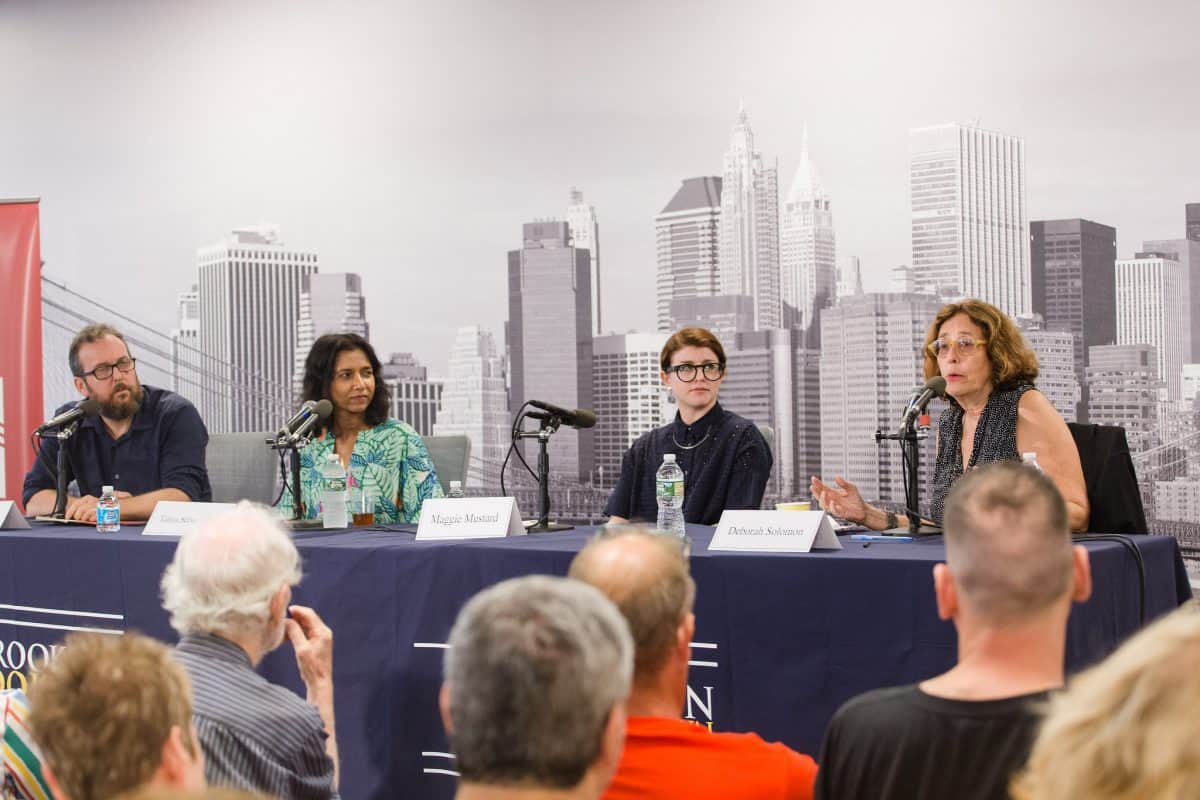 PEN America—Photo by Aslan Chalom
PEN America—Photo by Aslan Chalom
“What about books—should people like Sherman Alexie and Junot Díaz still be on syllabi and invited to book festivals?”
MUSTARD: For syllabi, it doesn’t mean that they fall off, but they do get reframed, and I think that there are a lot of things that go into the way in which you communicate these works to a younger generation of consumers of creative media or artistic media. I think those are two very different forms of platforming, and I don’t want to split hairs, but I think something being on a syllabus is different from getting a speaking fee. I think it’s important to think about the context in which that platforming is happening. Some forms of platforming might be more laudatory than others just by dint of what they are. It doesn’t mean that Junot Díaz can’t be on a syllabus, but the conversation around the work is different to students and to be sensitive to what students’ experiences might be also.
SELVARATNAM: I feel I don’t know so much about the Sherman Alexie case, and I don’t want to get too much into the weeds on this one because there’s so many polarizing opinions, but there have been a lot of meaningful conversations around Junot’s case and there was thorough investigation done as well.
SOLOMON: But do you think he should be invited to this book festival, for instance?
SELVARATNAM: Well, I’m not programming it—but I would like to see Junot speak, yeah.
“How about a movement to pressure the institutions that enabled the guilty men to make reparations, hire more women, promote more women, create programs that feature women?”
MUSTARD: Yes. That sounds really good.
“You’ve described the moral failings of the artist, but in the past, conservatives have used morality to suppress art. For example, Giuliani trying to remove the piece ‘Piss Christ’ from the Brooklyn Museum, Tipper Gore trying to censor lyrics, Mapplethorpe’s homosexuality and S&M images. How do you address dangers of condemning artists from the right mimicking the current condemnation of certain artists from the left?”
SCOTT: I actually think, with respect to the question, that this is a huge red herring, that censorship is action of the state and what is happening to these men is not in most cases involved in the exercise of state power. I would also suggest that the accusation of censorship always comes very quickly, especially when any feminist criticism of any art arises, even before—and especially maybe before—the #MeToo movement.
A couple of weeks ago, there was an essay by Joyce Maynard in The New York Times Book Review about her experience with J.D. Salinger, and in particular her experience having written about that experience—which, if you’re talking about someone being cast out and silenced and marginalized and made a pariah, it was her, because she had the temerity to write about something that happened to her in her relationship with a very famous, venerated artist. I don’t tend to be moved by the hand-wringing about censorship or the responses that I got to my Woody Allen piece. All I said is that we need to look at these things in a new way, and that compared me to Stalin and the Khmer Rouge. But there’s something telling about how quickly that rhetoric kind of sets in.
SOLOMON: Well, I think it’s great that we’re so attuned to the perils of the rhetoric, there’s a difference between censorship and members of a consumerist society deciding not to patronize. We have power as consumers, and that’s not censorship. We decide not to go see a movie or an art show; that’s not censorship.
SELVARATNAM: We have an unusual situation in America, which is: As long as we have a perpetrator in the White House and a perpetrator in the Supreme Court, anything goes and nothing surprises me. What do we do with this current moment? I think this movement is happening because of that very devastating and constant reminder that we have to get to a better place.
SOLOMON: And our institutions aren’t going to do it for us, our federal government is not going to do it, and our Supreme Court is not going to do it for us, so we’ve taken into it our own hands.
“How do you make a connection between harassment and a boost that might give the ability to produce art, particularly the confidence artists sometimes derive from the subjugation of others? How do we see art if producers might have serially drawn energy from harassment? Is harassment a muse?”
SOLOMON: Okay. Is it necessary for artists to destroy in order to create? That’s the question.
MUSTARD: The question is reminding me of the particular artist who I worked with for the show at the Museum of Sex, a Japanese photographer with a certain degree of celebrity here in the United States but who is kind of Titan-like in Japan, Nobuyoshi Araki. His work in particular is most well-known for being very sexually provocative and explicit, and often is very heterosexual, and also there’s been second-wave feminist arguments that it’s very objectifying of women—it features lots of women tied up in a traditional rope-tying apparatus. There’s lots of other work that he does, but that’s the work he’s most famous for.
One of the challenges with the show was figuring out a way, especially as allegations of his other behavior—which largely was actually like psychological bullying and horrible business practices in relationship to his muses—one of the challenges was that it’s not just about contextualization, it’s not just reframing now for an audience the interpretation of his work, but also making available additional information about the context of production, the dissemination and interpretation, and it is important that we be as much aware as possible of all of the stages of an artistic work coming into creation.
SOLOMON: I disagree with that. I think if an artist is that openly abusive, we don’t need to look at him now. Let him show his work a hundred years from now when he’s dead, let another world decide; right now we are devoted to the cause of making the world more just, and I think that’s a good priority for us in the 21st century.
SELVARATNAM: I think harassment, like many painful experiences, provides excellent grist for the mill. Diving into that pain is a really powerful subject. And also it’s something that so many people learn from by being able to engage with an artwork that explores that. It’s a really powerful subject.
SOLOMON: You’re talking about the harassed person, you’re not talking about the harasser?
SELVARATNAM: Both. The harassed and the harasser. My feeling is what’s happening now, what’s being facilitated, is more voices from those who are the victims. And that is very powerful and very healing, because the cycle of violence is something that is all-pervasive in all arenas; it’s not just something in our relationships or in our workplaces, it’s inculcated in us from the time we are born.
SOLOMON: I was looking at the Egon Schiele show at the Met Breuer and that is work that tends to be very graphic, and I thought this isn’t the right time for the show. This moment is different than other moments. Moments change, cultural contexts change, and this is a very special moment. The more we try to define it in conversations like this one, the more aware we all are.
SELVARATNAM: What I wanted to get to, the reason I feel it’s important to hear from the harassers and the harassed, is because it leads us towards an understanding of where this behavior comes from, because in many cases we read the statistics that a majority of people in prison are people who are harassed or abused as children, but we often don’t know that, we see them as criminals, but for me, I’m personally interested in understanding both psychologies.
SOLOMON: I’m not interested in the psychology of the harasser, I just want to stop them. Thank you all so much for coming today, and let’s all work on making this a nicer country!
Watch the full conversation here.
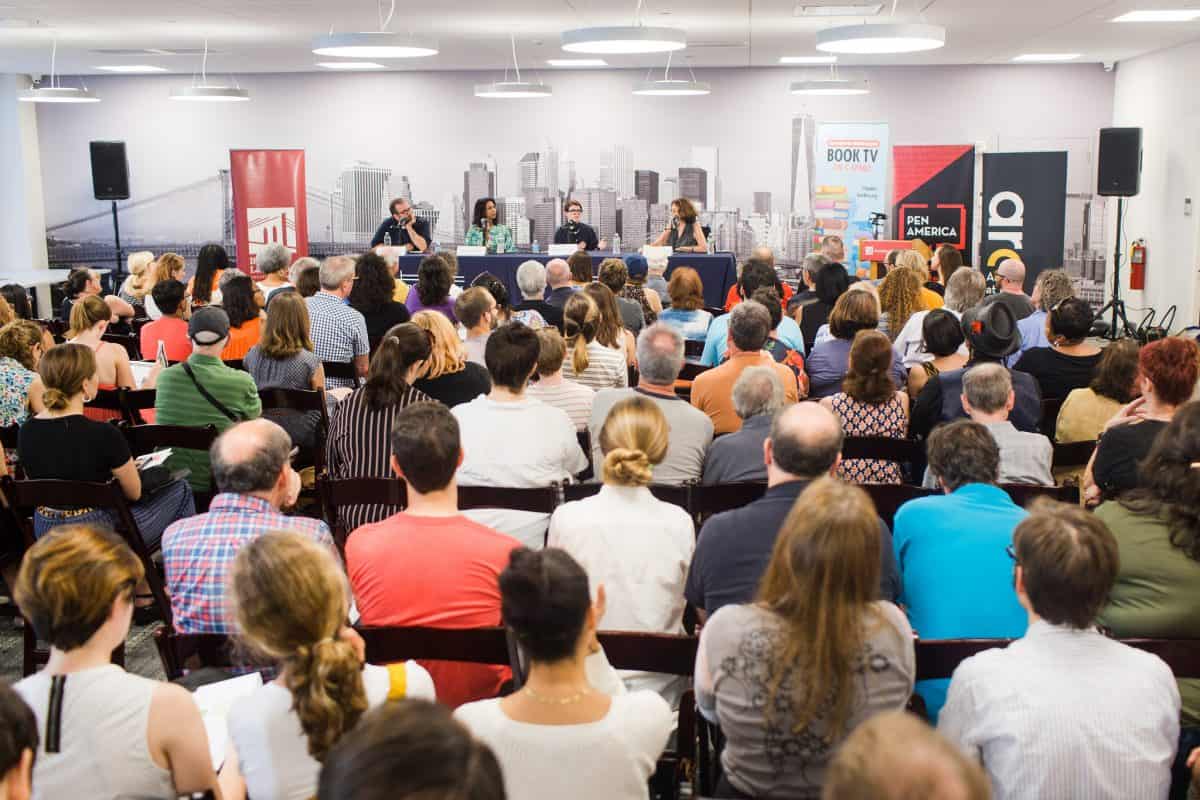 PEN America—Photo by Aslan Chalom
PEN America—Photo by Aslan Chalom
Deborah Solomon is the art critic for WNYC and a longtime contributor to The New York Times. Her reviews appear on Morning Edition and The Brian Lehrer Show. Her prize-winning biographies include Jackson Pollock: A Biography and Utopia Parkway: The Life and Work of Joseph Cornell. She is currently writing a book on Jasper Johns.
A. O. Scott is a film critic for The New York Times who has also written literary criticism for The New York Times Book Review and other publications. He is the author of Better Living Through Criticism: How to Think about Art, Pleasure, Beauty, and Truth, published by Penguin in 2016.
Tanya Selvaratnam is a writer and an Emmy-nominated and Webby-winning producer. With Laurie Anderson and Laura Michalchyshyn, she is cofounder of The Federation. Currently, she is also consultant producer for The Shed, team member of the 50 State Initiative/For Freedoms, and executive producer for UNSTOPPABLE ART/Planned Parenthood and GLAMOUR Women of the Year. She is the author of The Big Lie: Motherhood, Feminism, and the Reality of the Biological Clock.
Maggie Mustard is the Marcia Tucker Senior Research Fellow at the New Museum of Contemporary Art. She earned her PhD from Columbia University’s Department of Art History and Archaeology, where she specialized in modern Japanese art. She was the chief curatorial advisor for “The Incomplete Araki: Sex, Life, and Death in the work of Nobuyoshi Araki,” at the Museum of Sex in New York.

